One of the very cool things about having an online profile in relation to the history of pulp fiction is, from time to time, people make contact and send me old pulp novels and magazines they feel I might be able to make good use of. And a couple of months ago I was offered a collection of mainly American pulp magazines from the 1930s, found while renovating a house in Melbourne.
Queensland academic Toni Johnson-Woods has written about how the origins of Australia’s post war pulp publishing industry lie in import restrictions on print material introduced by the Australian government in 1938. The restrictions were mainly aimed an American publications, especially remaindered comics and pulp magazines which were being dumped in large quantities in Australia in the 1930s. This dumping fuelled an unlikely alliance of groups who pressured for the restrictions: religious organisations, concerned about the moral impact of these publications; nationalists who viewed cheap American publications and other forms of mass American culture, such as jazz and US motion pictures, as a threat to our then Anglo-aligned culture; educationalists; and protectionists worried about the livelihoods of local writers printers and artists.
I have always been curious to to see for myself exactly what it was that could have been so offensive and dangerous about these pulp magazines as to warrant import restrictions to prevent them entering the country. So, when the magazines were offered to me, I jumped at the chance to take them.
The magazines were found in a two-story house Victorian terrace house in Rathdowne Street, North Carlton, a suburb of inner Melbourne. The property was bought by an individual named Andrew Richards – who was kind enough to pass the magazines onto me – and a friend in 1972. It was renovated in July 2015, at which time it was decided the ground floor ceiling needed to be demolished and replaced. It was during the process of taking out the ceiling that builders found the magazines in what had been a small space underneath a removable section of floorboards in what had been a small room on the first floor.
Research conducted by Richards found that the property had originally belonged to a butcher and Richards contents that the small room would most likely have been used by a son (although wouldn’t it be great if it was a daughter), who was most likely the owner of the magazines.
The magazines were published in 1936 and 1937 – just before import restrictions were introduced – making them just over 80 years old. As you can see from the images, they are not in great condition, having been nibbled on by various insects and rodents over the period during which they lay under the floorboards. They include several copies of Dime Mystery Magazine, one copy each of Weird Tales, Ace Mystery magazine, Horror Stories, and what appears to be a romance fiction one called Breezy Stories. There are also a couple of very softcore girlie magazines, Gay Paree and Mustard Pot.
I have not been able to find out anything about Gay Paree and Mustard Pot, except that they were published in Australia and distributed by Gordon and Gotch, so they were not illegal. Tame today, they were no doubt quite racy by Australian standards.
The other magazines are all fiction digests with some interior illustrations. The American fantasy and horror magazine, Weird Tales is probably the best known, due to the fact their contributors included H.P. Lovecraft, Robert E Howard and Robert Bloch, the latter of whom has a story in the copy of the magazine among the stash given to me.
I have not been able to discover much about Horror Stories, Ace Mystery Magazine, and Breezy stories. Breezy Stories appears to be some sort of romance fiction magazine.
Horror Stories, Ace Mystery Magazine, and Dime Mystery Magazine are all what was known as ‘weird menace’ or ‘shudder pulp’ magazines. These featured stories in which the hero had to go up against sadistic, often foreign looking villains, and artwork that included graphic scenes of torture.
Dime Mystery Magazine is the longest running of the titles, going from the early 1930s to the 1950s. It started out as a straight crime magazine but then took on shudder pulp style of story and art. You can find out more about the publication at this site here.
What insights can we get from these magazines? The violent, lurid cover art in which semi naked women are menaced by evil villains and deranged scientists and their various strange inventions, surely speak to various currents coursing through 1930s American culture, such as the growing public visibility of women in American culture and the insecurity of men around this. Also writ large is a fear of foreigners and fascination for the emerging wonders of science and technology, which in turn perhaps hint at the coming conflict that would engulf the globe only a couple of years later.
The outre nature of the covers is emphasised by many of the story titles, ‘Satan’s Bedchamber’, ‘The Beauty Shop of Horrors’, ‘Brides of the Dust Demon’ and ‘Hell’s Hungry Children’. While the majority of the authors are male, a few stories by female writers make their way into the magazines.
The delicate shape the magazines are in precludes a comprehensive reading of the stories. But from the amazing images below we can see the inside illustrations of these publications were even more sexually explicit than the cover art, including, surprisingly for the time, the depiction of near nudity.
The violent, highly sexual nature of these magazines led to a public outcry against them in the US, with one contemporary media account claiming that reading a shudder pulp provided ‘enough illustrated sex perversion to give Krafft –Ebing (the Austro–German psychiatrist and author of the foundational work Psychopathia Sexualis) the unholy jitters’. One can well imagine how controversial and polarizing these publications must have been in conservative 1930s Australia. Which is precisely why the owner of the magazines featured in this post went to such lengths to hide them.
The magazines contain some advertising for things like acne treatment, novelty items, and self improvement courses, the latter of which has been cited as proof pulp magazines were read by lower middle class males keen to advance up the class ladder.
The other product to feature prominently in these magazines is, of course, cigarettes. An advertisement for Camels cigarettes on the back cover of Horror Stories magazine claiming: ‘Scientific studies show clearly the manner in which Camel aid digestion. Using sensitive scientific apparatus, it is possible to measure accurately the increase in digestive fluids – alkaline digestive fluids – that follow the enjoyment of Camel’s costlier tobacco’.
The back cover of the May 1936 edition of Ace Mystery Stories, also tells us where at least one of the magazines was purchased, a lending library and book exchange in the then very working class inner Melbourne area of Johnston Street, Fitzroy.
I would love to hear from any Pulp Curry readers who may be able to provide additional information about any of these publications or have similar experiences of finding old pulp magazines or books in strange places.
Thanks to Andrew Richards and Jane Sullivan for helping to make this piece happen.

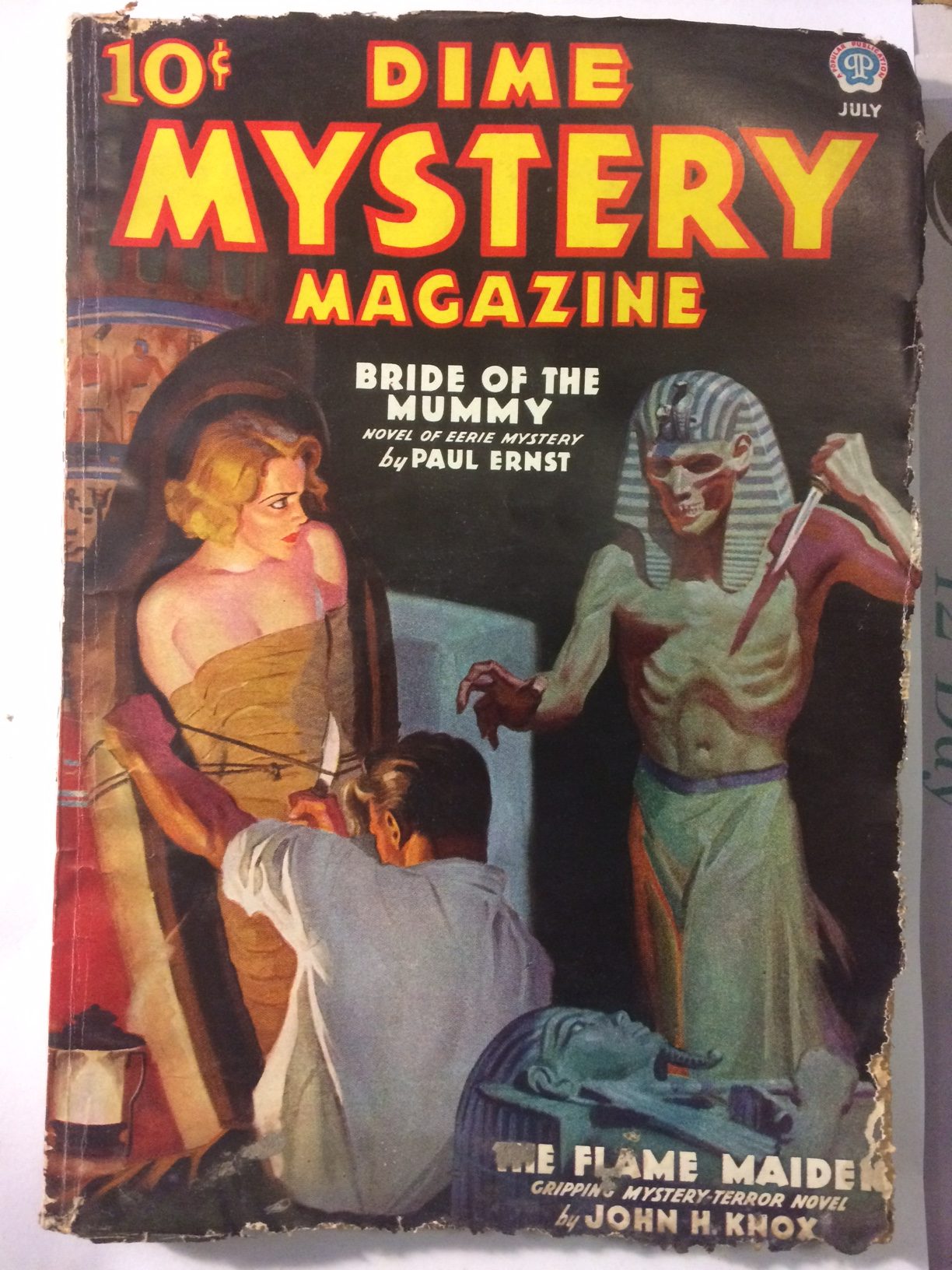
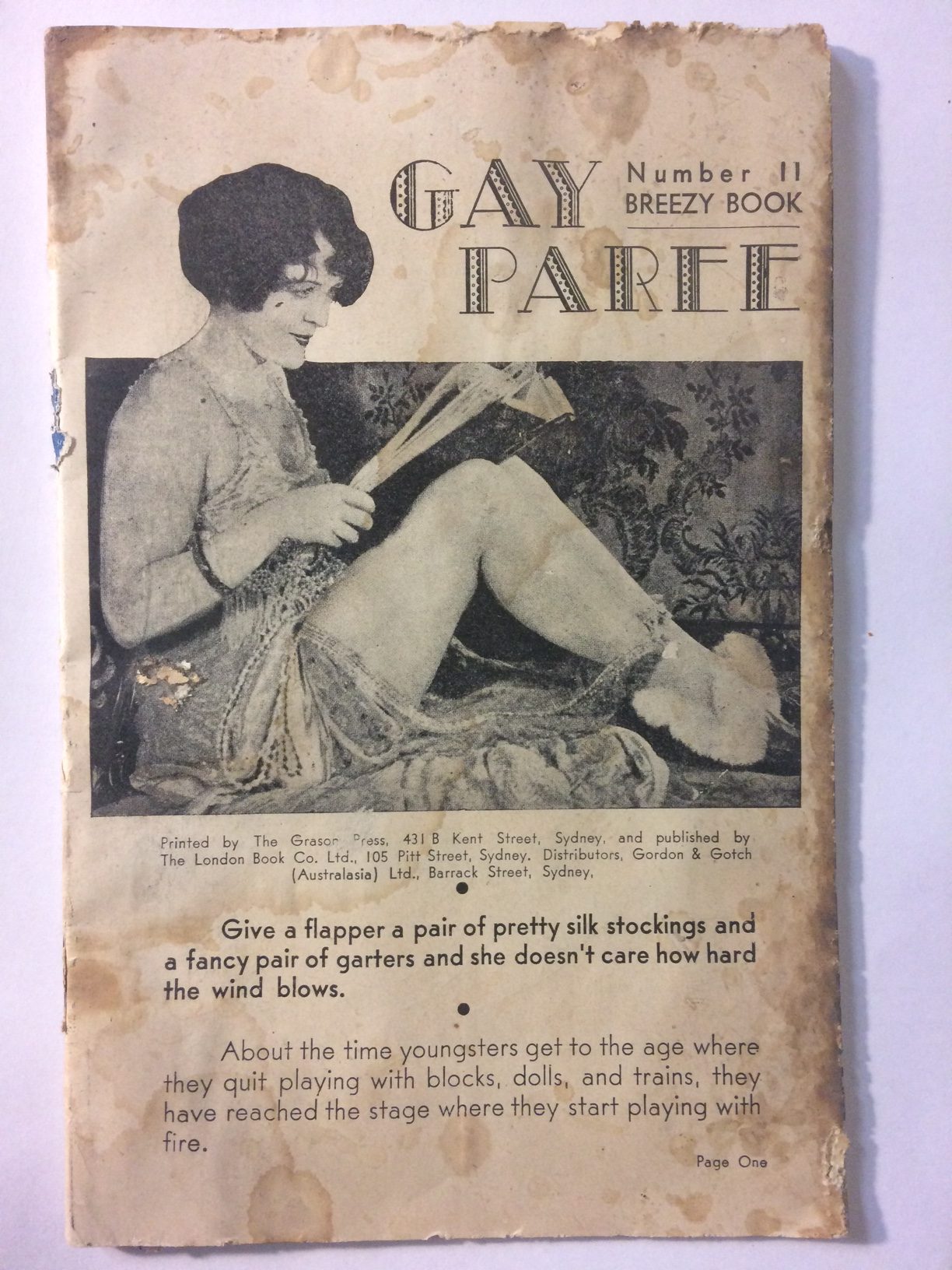

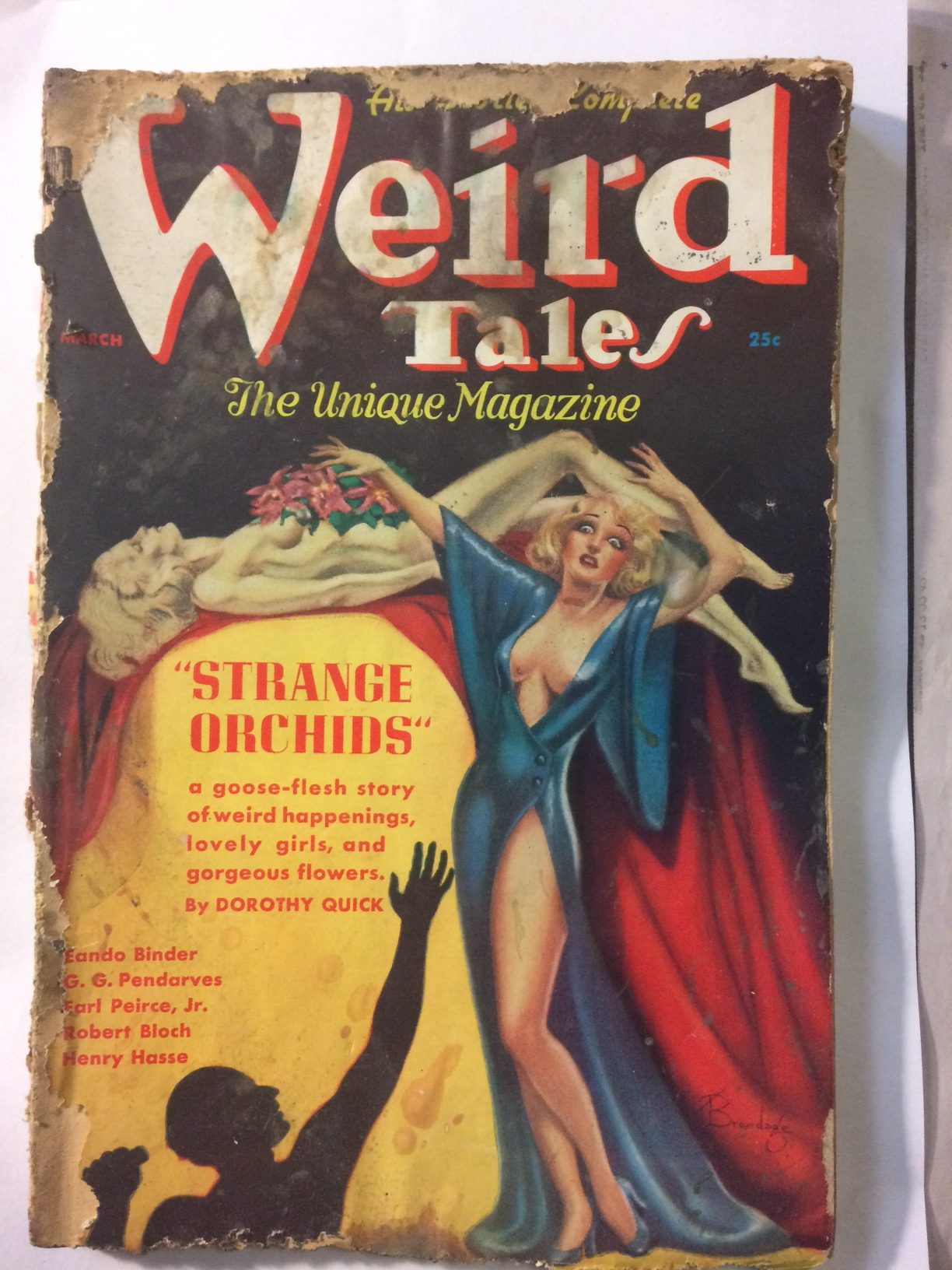
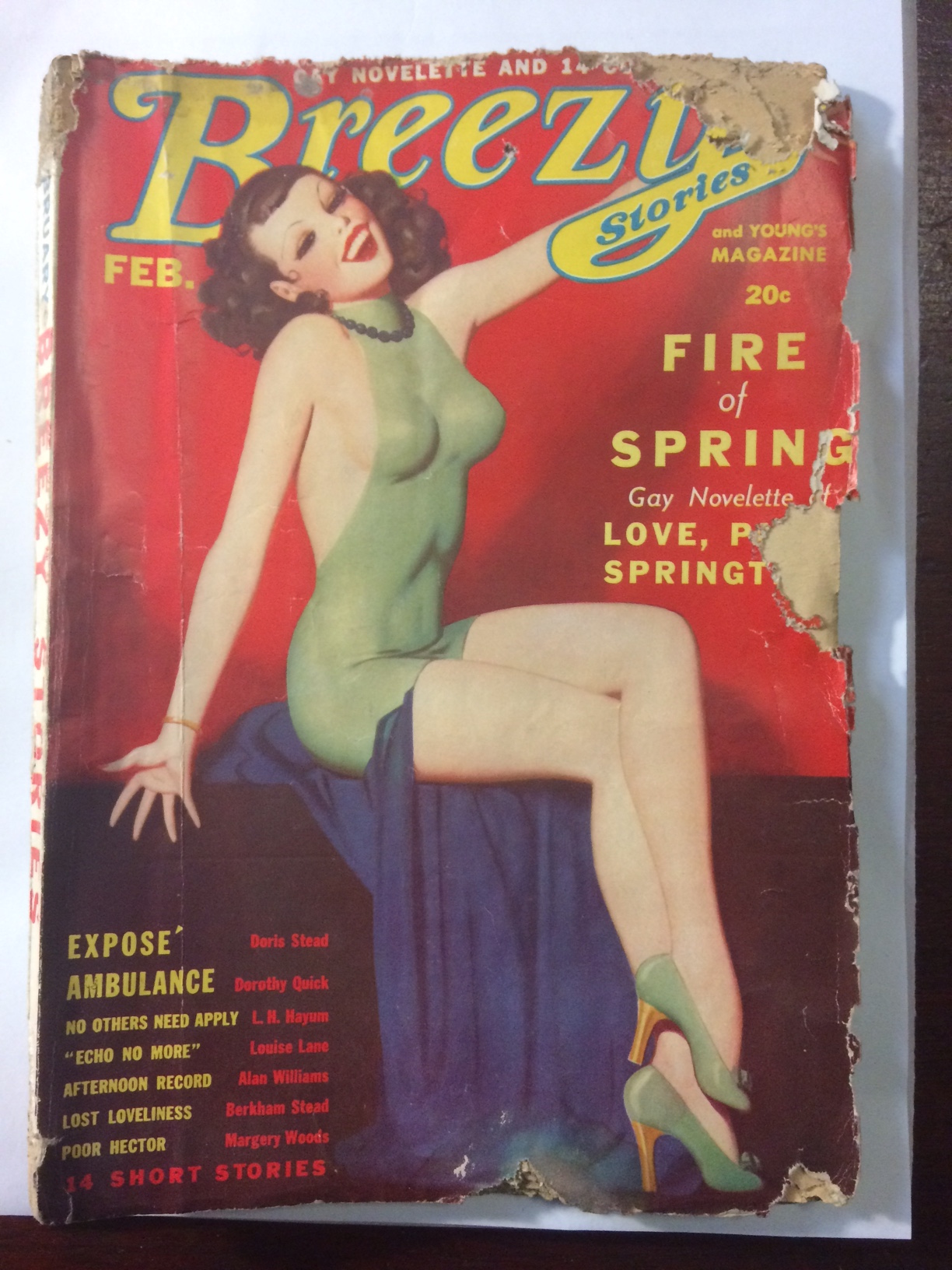
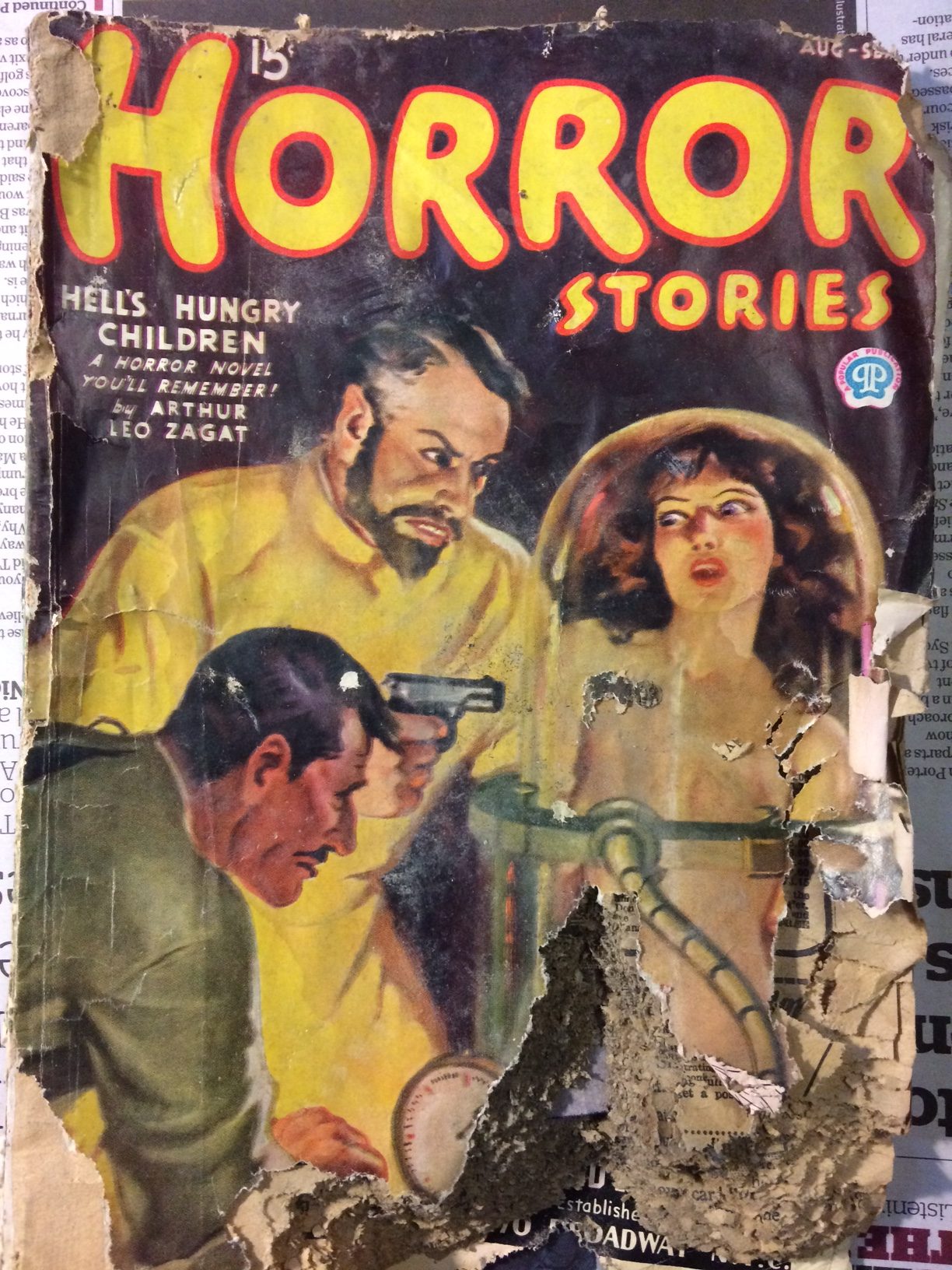
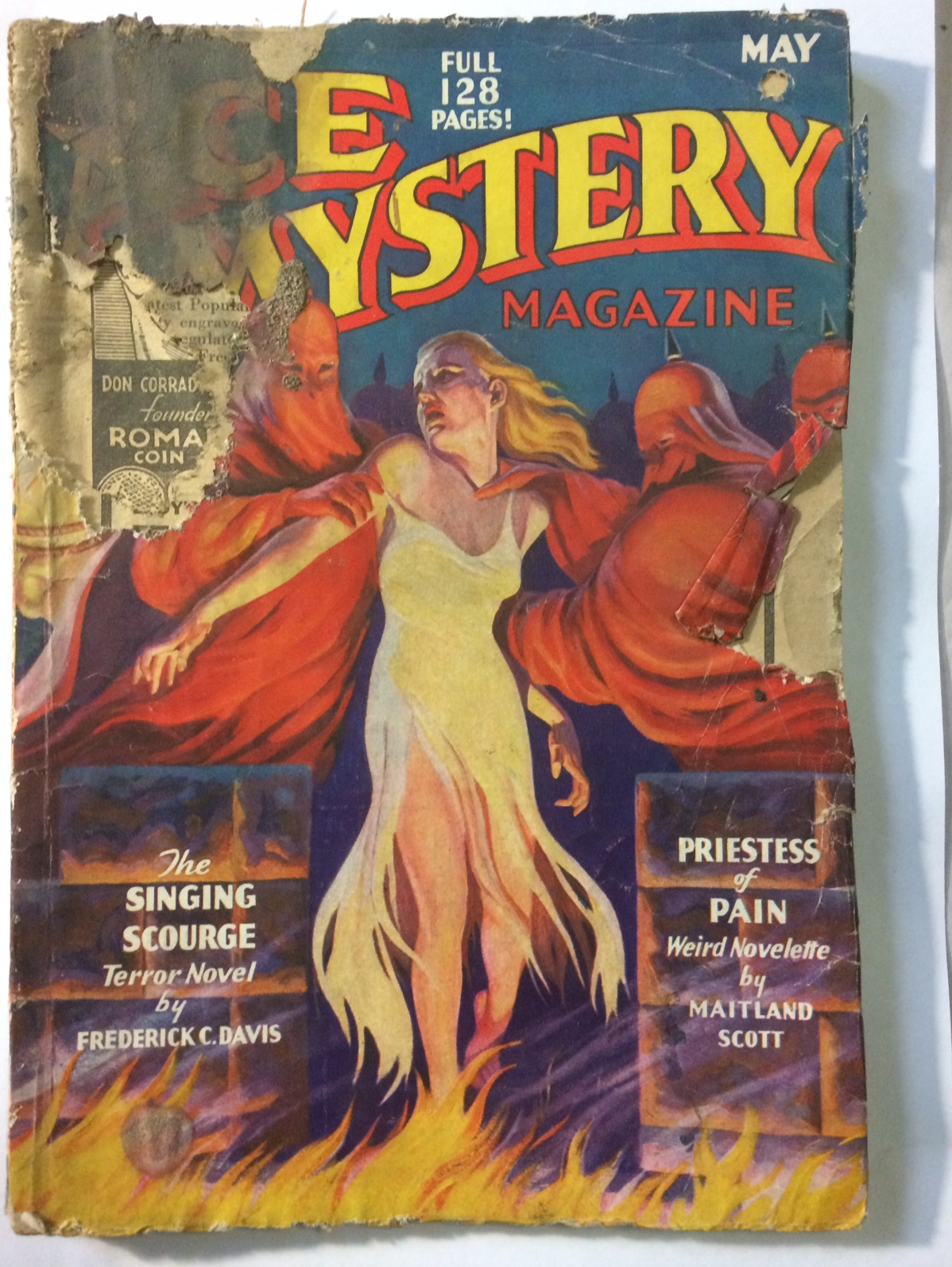
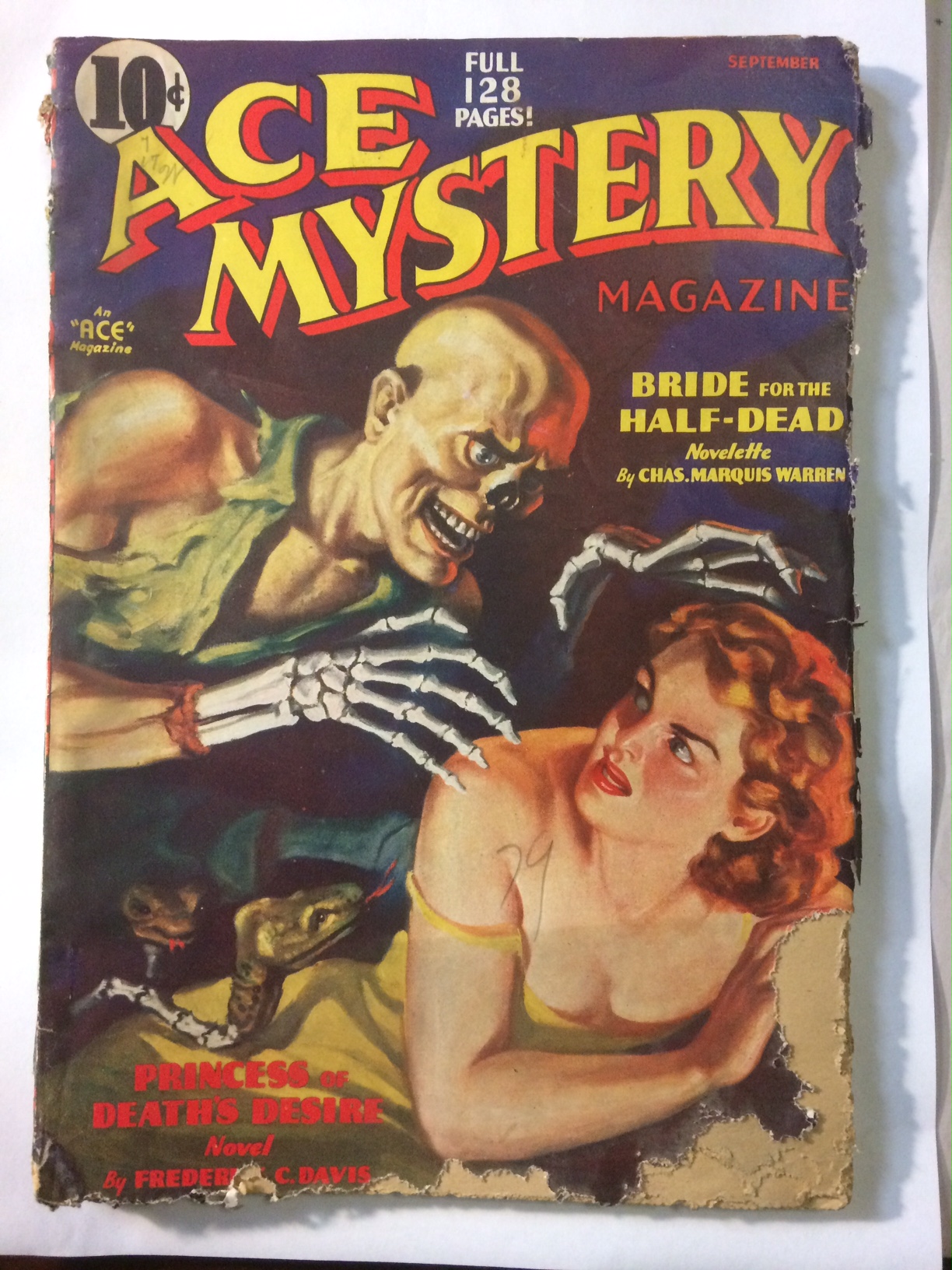
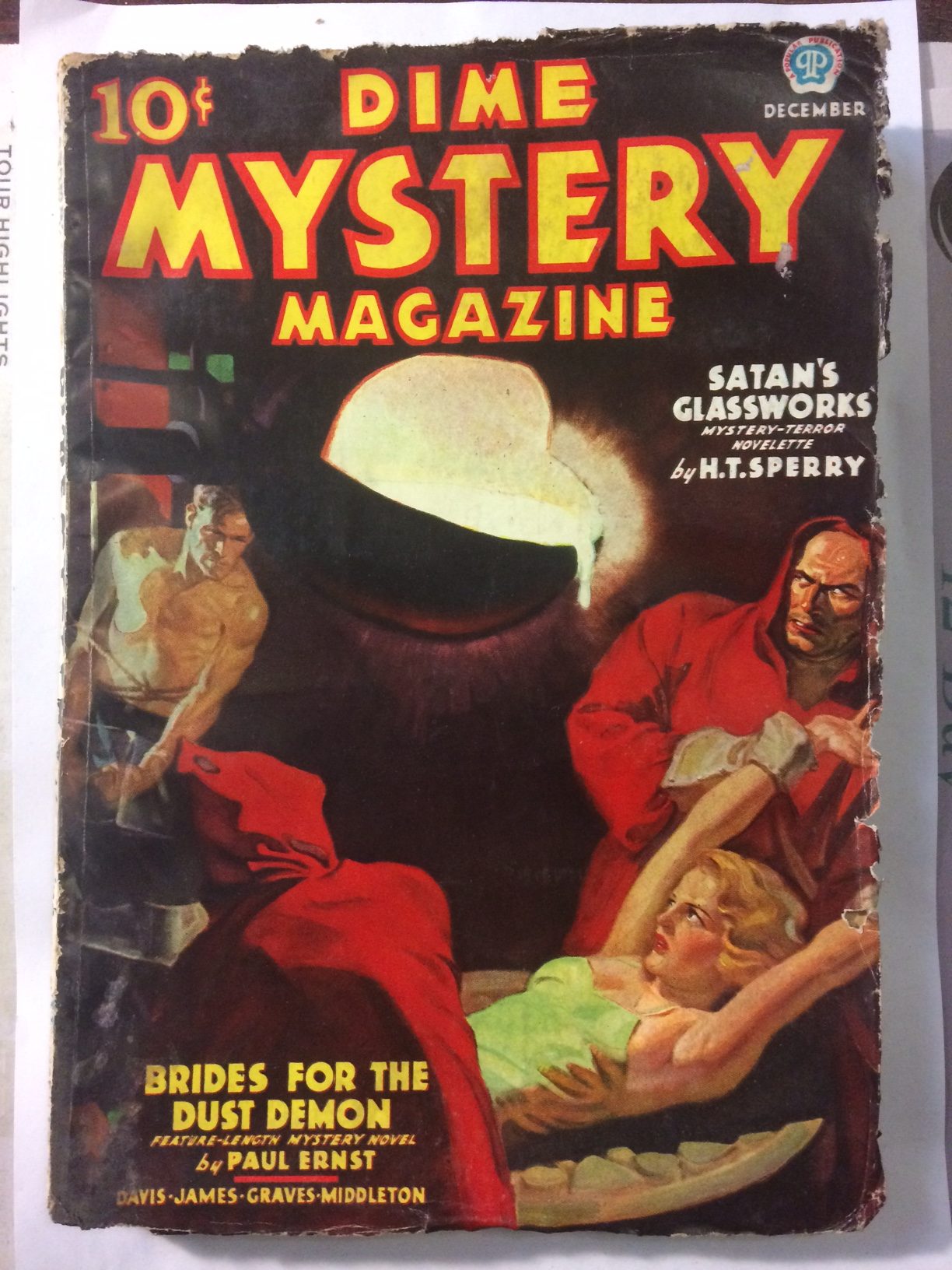

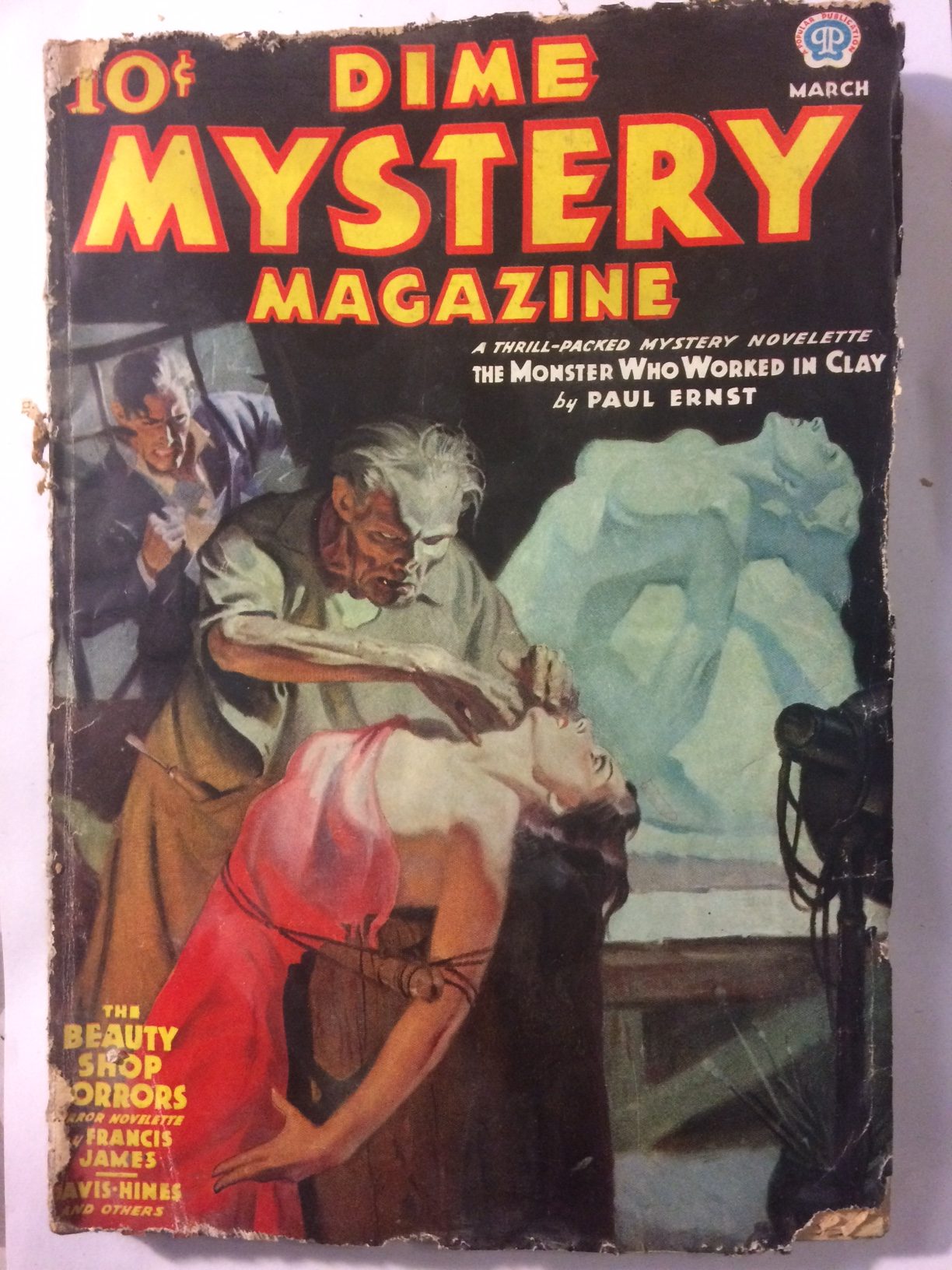
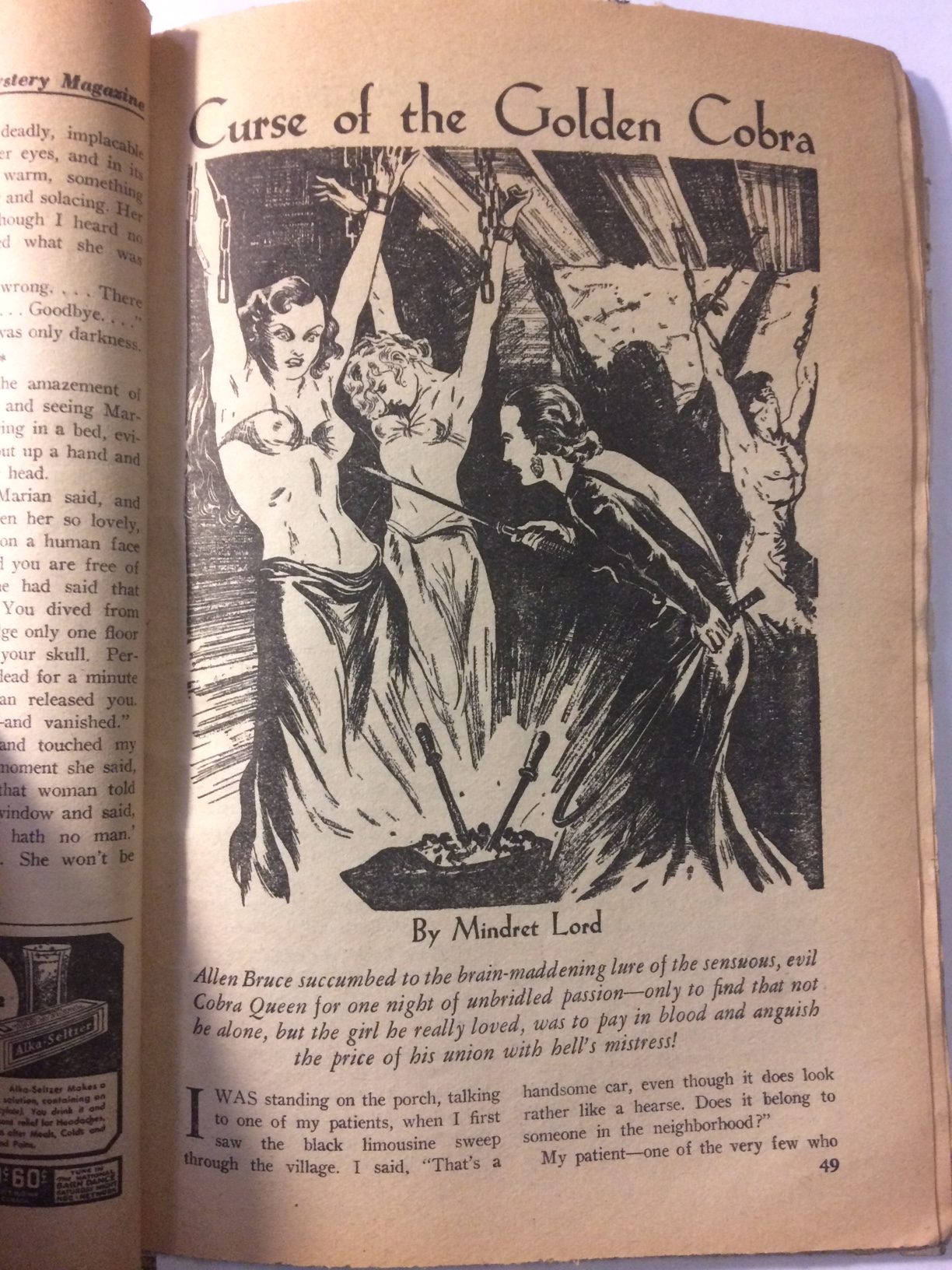
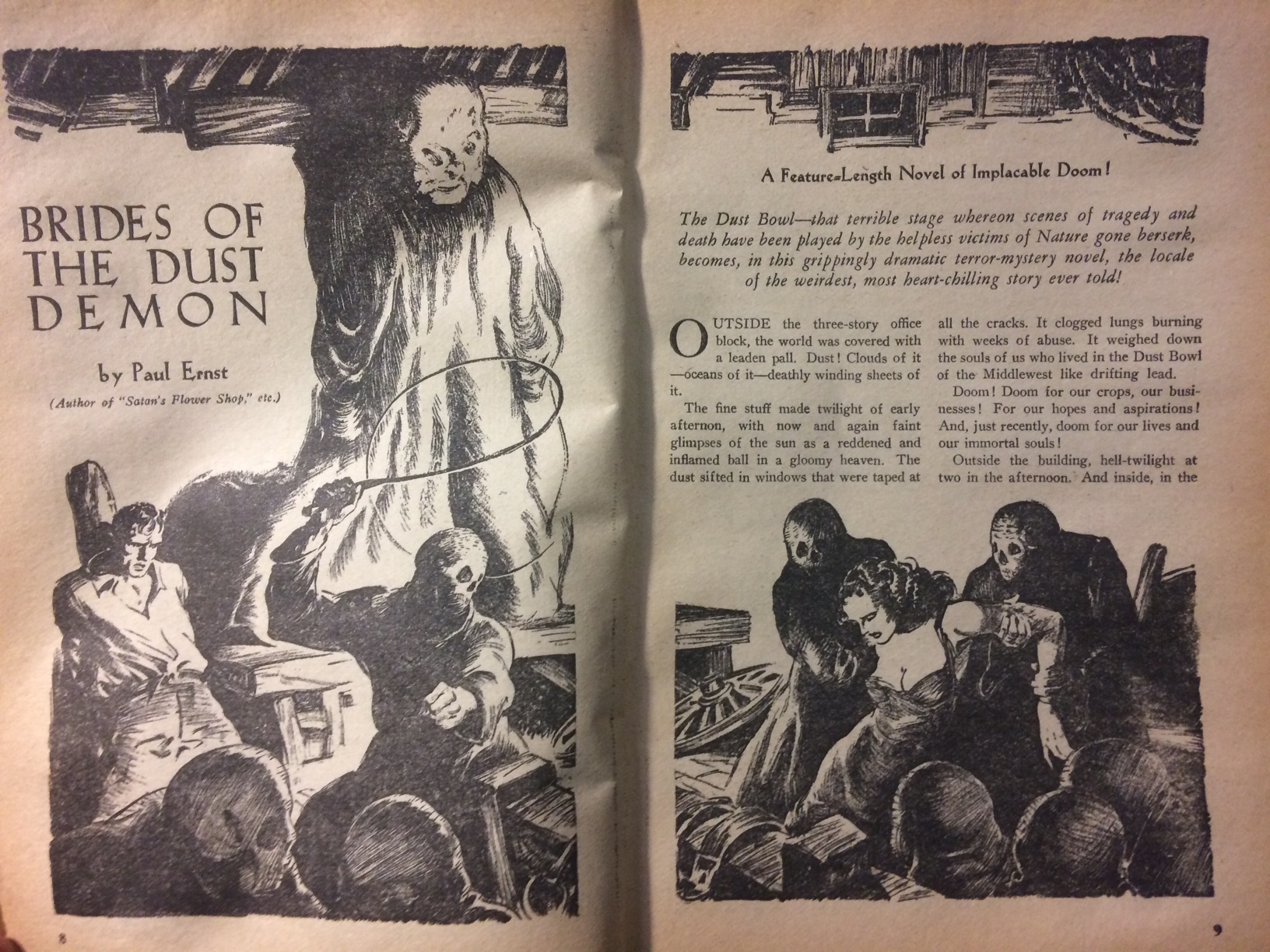
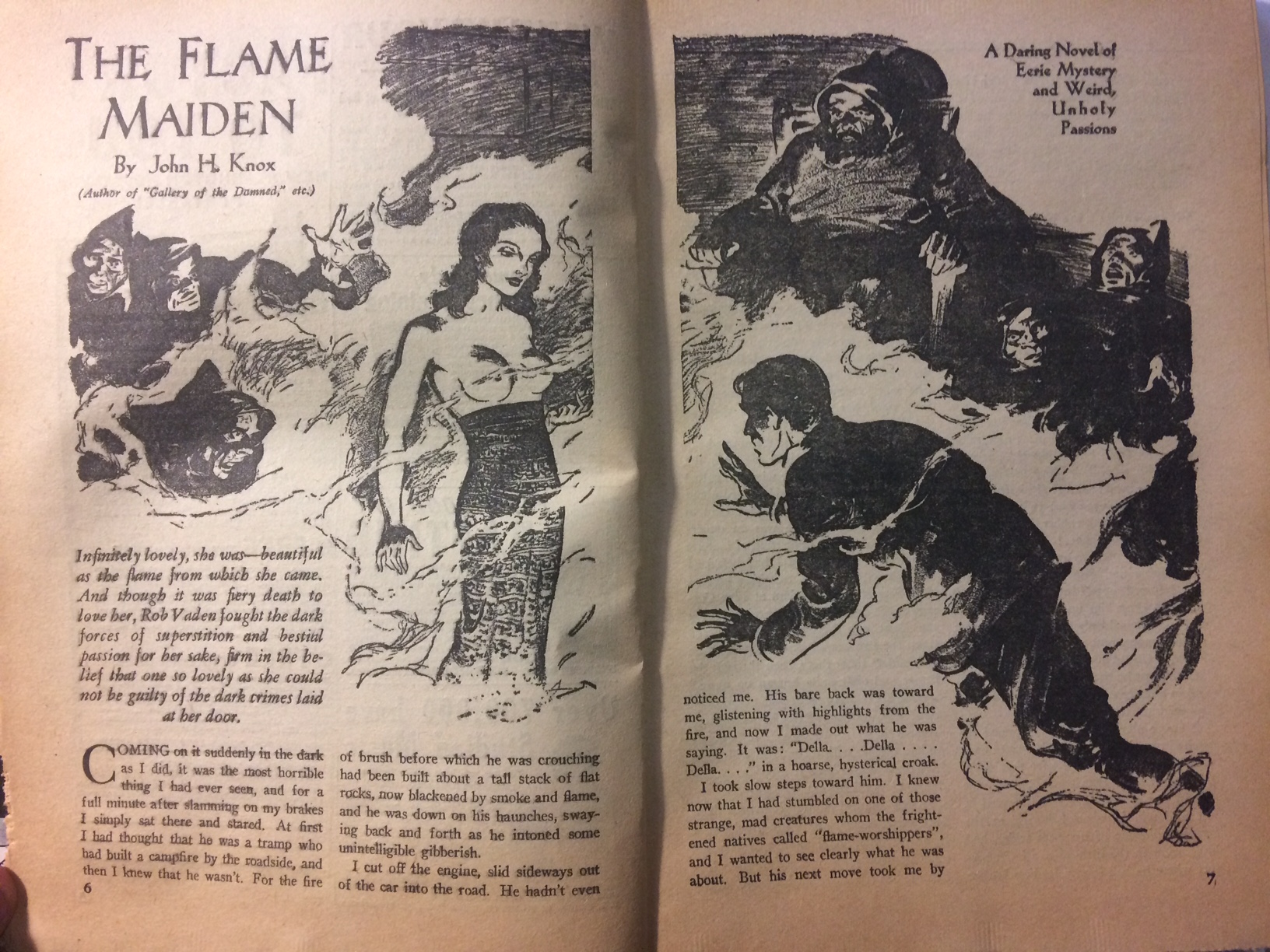
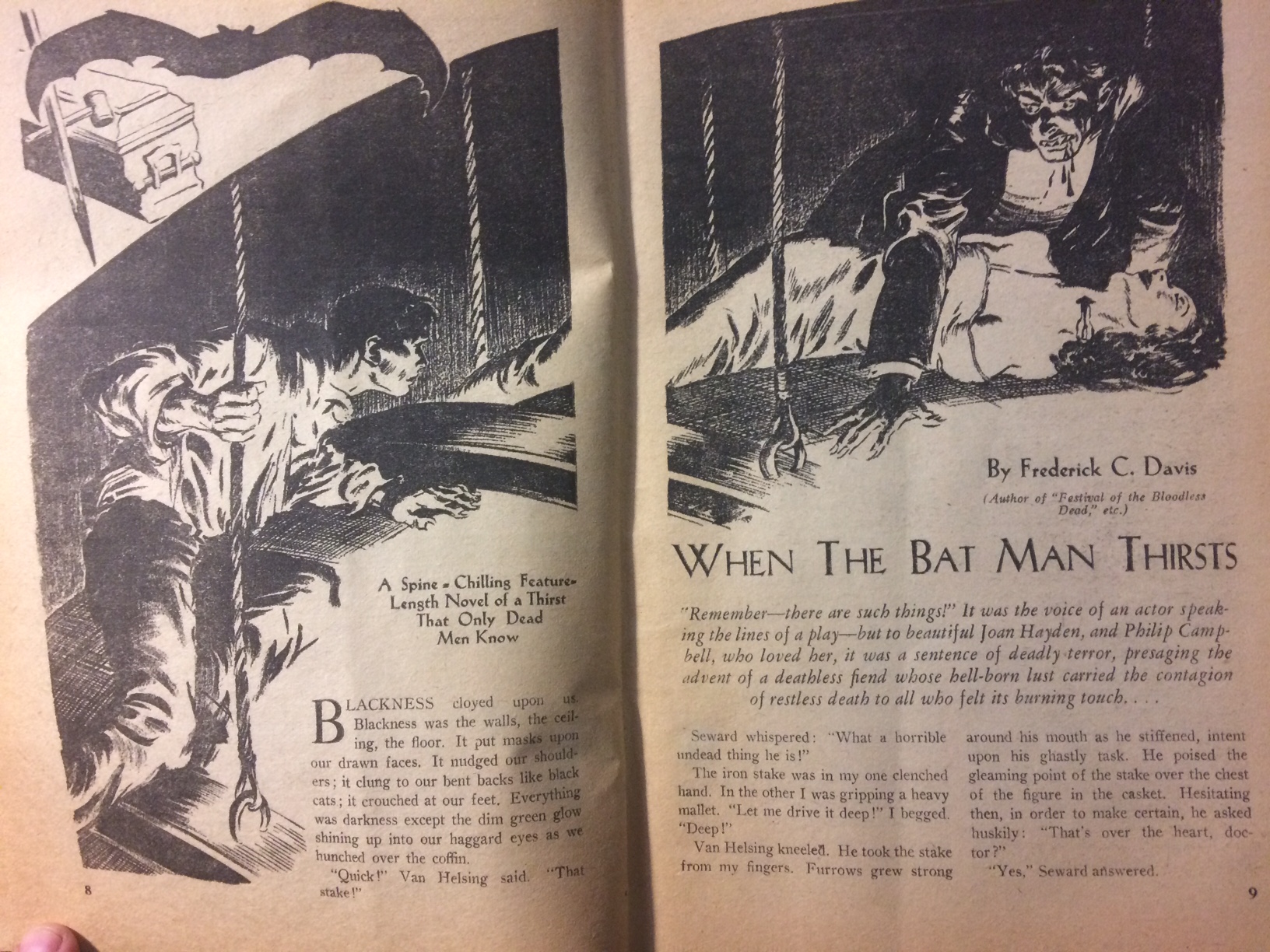
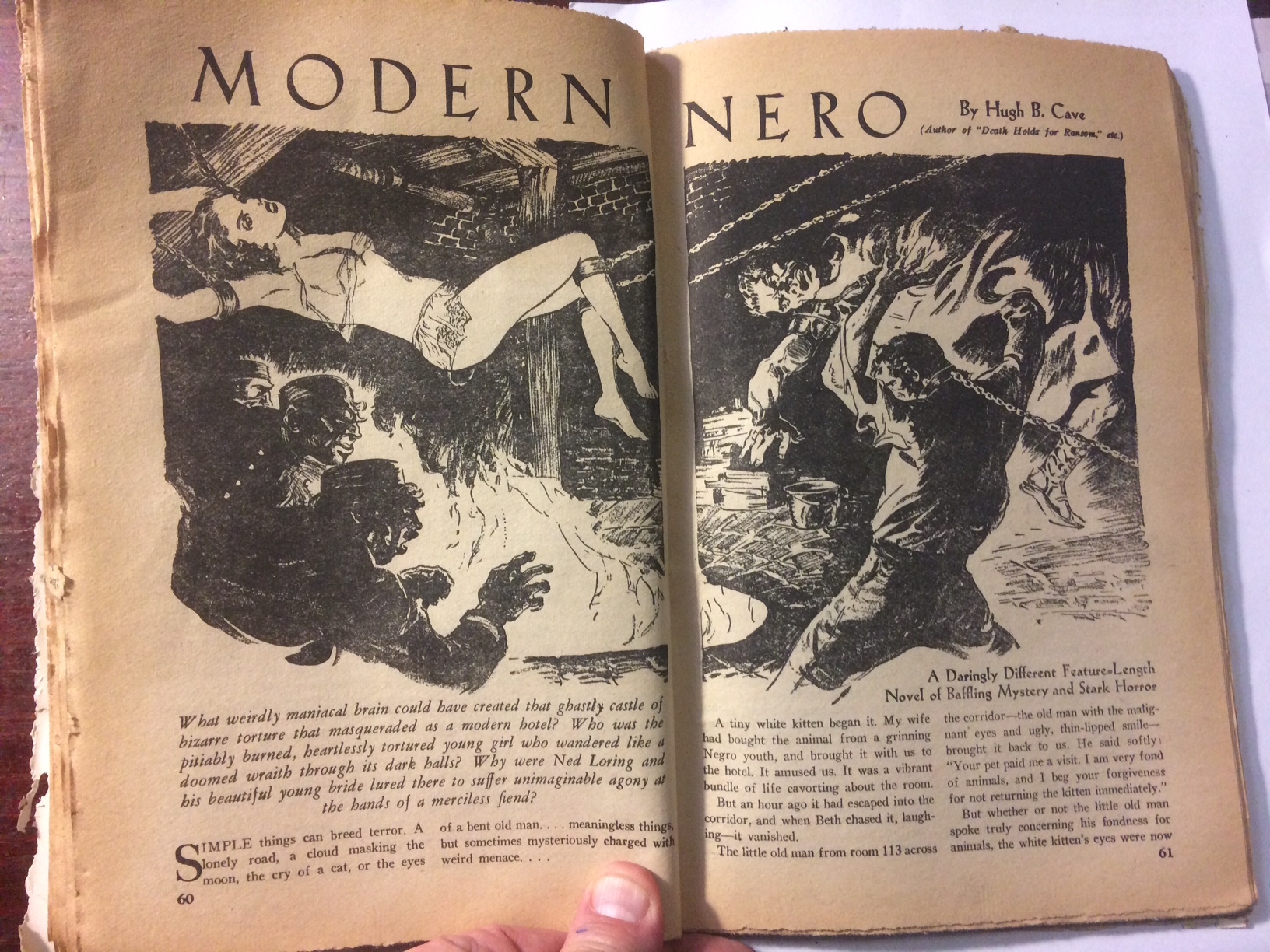
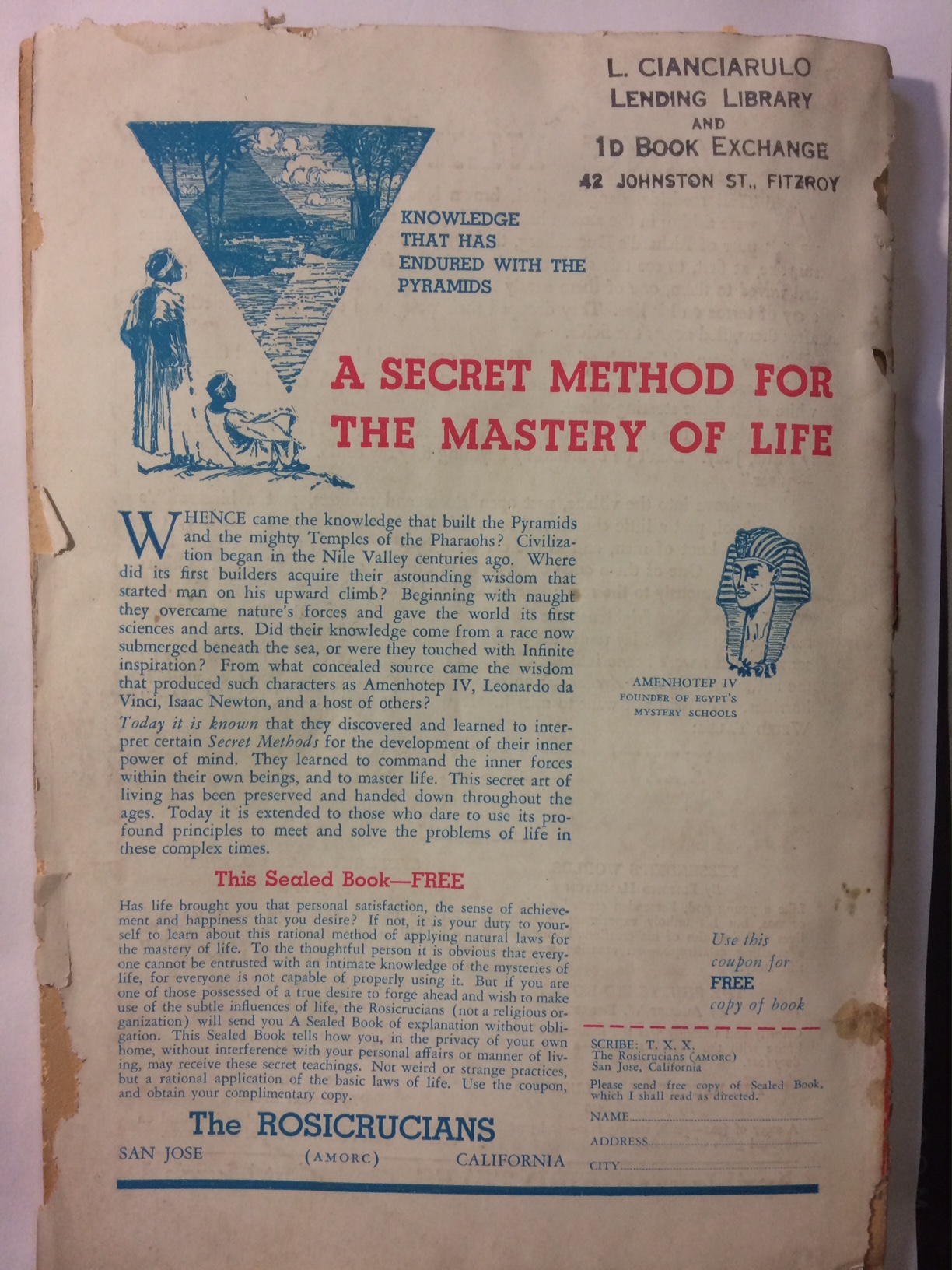
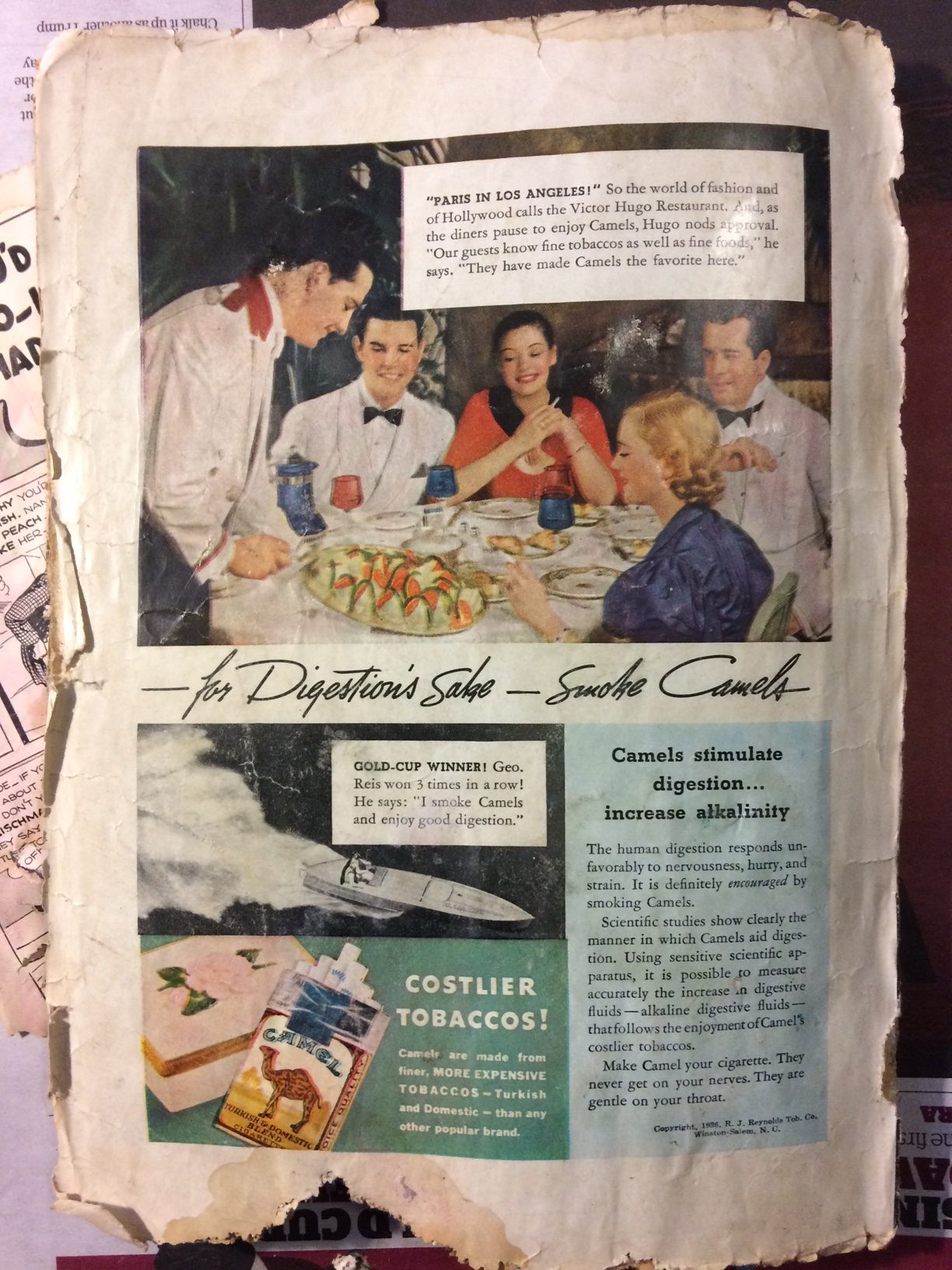



















You’ll find scanned versions many of these titles (and literally thousands more of a wide variety of publications) in the Pulp Collection at the Internet Archive. https://archive.org/details/pulpmagazinearchive
Thanks, Buzz, I will check that out.
Great story. I love the fact that these were found in a secret stash. And that cover art is wild!
Yes, the cover art is pretty amazing. I can only wonder how it must have been received in 1930s Australia.
Thanks for sharing this, mate. It made me think back to my own childhood homes in Australia and I wish I had torn up the floors and stuff to check for great magazines like these! Oh the missed opportunities of youth.
My pleasure, glad you enjoyed it.